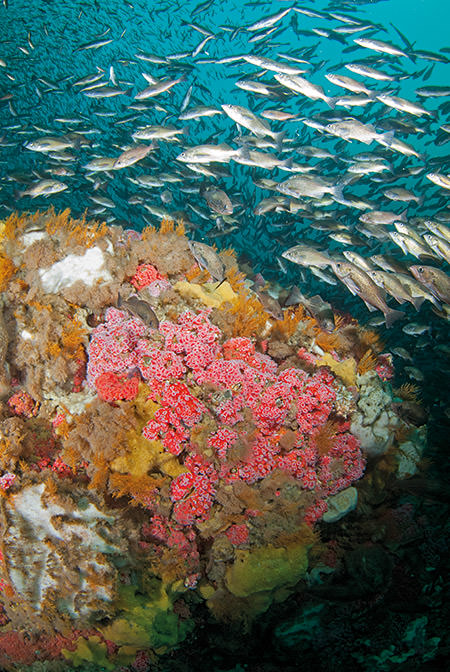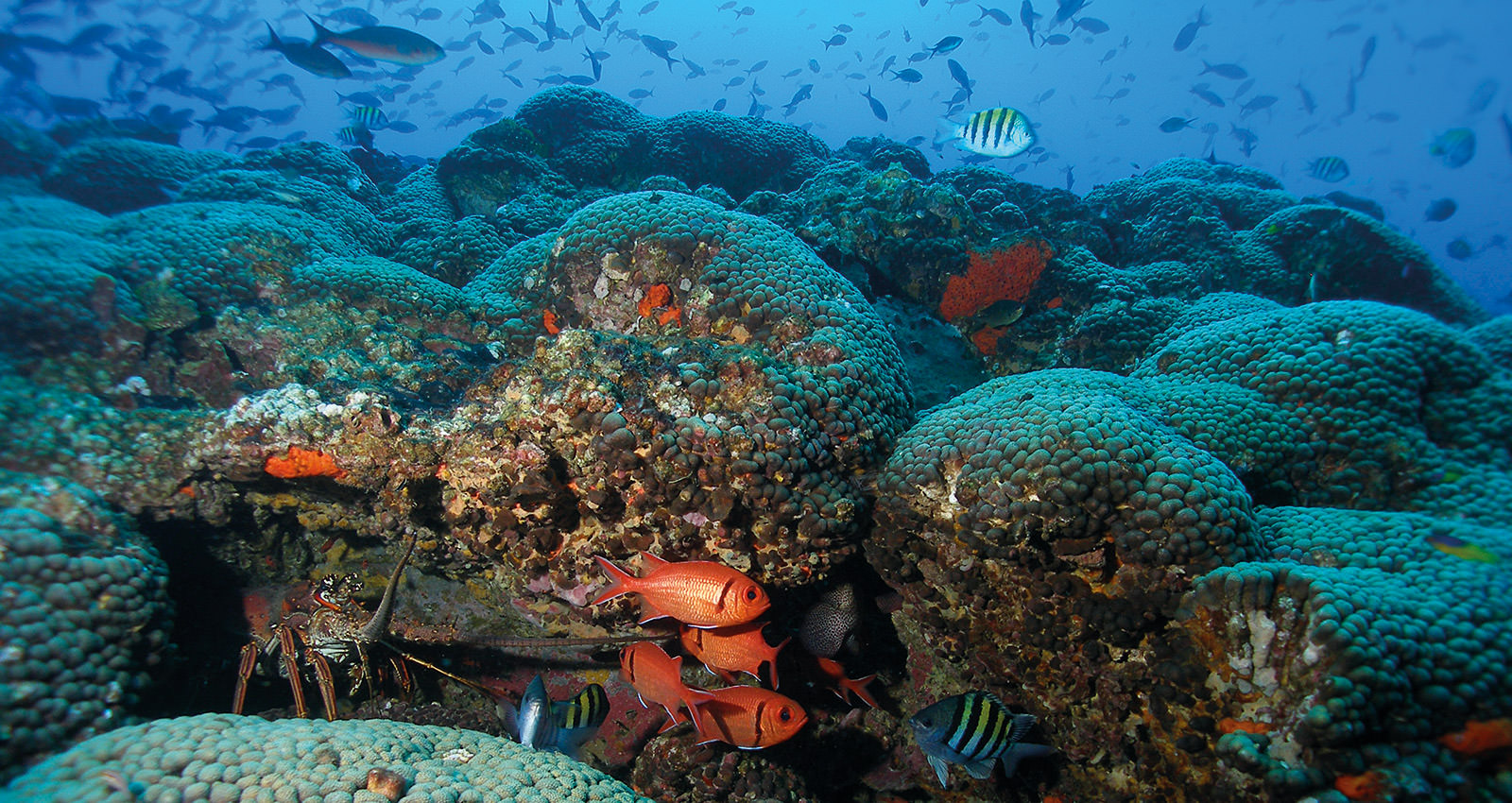Undersea Architecture
by Elizabeth Weinberg
Say you're a coral gamete drifting through the water or a Dall's porpoise looking for fish to eat. How do you decide where to spend your time?
Location, location, location.
Throughout the world's ocean, relatively barren plains give way to mountainous features called banks and seamounts. These transitions in ocean topography can make a big difference: many seamounts and banks teem with life, and for that reason, several of them are protected within the National Marine Sanctuary System.
In California, Cordell Bank National Marine Sanctuary protects a large bank that rises from the soft sediments of the continental shelf at depths of 300 to 400 feet and reaches to within 115 feet of the ocean's surface. Each spring and summer, strong northwest winds and the south-flowing California Current drive surface waters away from shore, making way for deep, nutrient-rich offshore water to upwell in its place. As it moves over Cordell Bank, this upwelled water fuels an explosion of life, powering the production of phytoplankton and zooplankton that feed the fish, seabirds, invertebrates, and marine mammals found around the bank and throughout the sanctuary. Thanks to its ideal location, Cordell Bank hosts life in technicolor, with strawberry anemones, hydrocorals, sponges, and more all competing for space and nutrition.

The seafloor landscape of Flower Garden Banks National Marine Sanctuary supports a different, but equally lush, ecosystem. Unlike the granite reef of Cordell Bank, the Flower Garden Banks are actually formed by salt domes that push the sea floor upward. These domes formed about 190 million years ago when the Gulf of Mexico was a shallow sea and hot temperatures caused evaporation, depositing a thick layer of salt on the seafloor. This salt layer was later covered by mud, sand, and silt deposits, and over time, these dense layers put pressure on the salt deposits. The more buoyant salt deposits forced themselves through areas of weakness in the overlying sediments, forming domes that rise from more than 400 feet deep to within 60 feet of the sea surface.
Roughly 10,000 to 15,000 years ago, coral reefs began developing on top of the salt domes beneath the East and West Flower Garden Banks. The hard surface of the seabed pushed up by the salt domes served as the perfect place for coral gametes to attach, and the clear, warm, sunlit water above the domes and the area's steady food supply allowed the reefs to flourish. Today, the sanctuary protects some of the world's healthiest coral reefs.
Seafloor features are significant in the deep ocean, too. The recently expanded Papahānaumokuākea Marine National Monument protects a number of deep-sea volcanic seamounts, some of which are nearly 16,000 feet high—over half the height of Mt. Everest. While much of the surrounding seafloor is soft mud, the exposed rock ledges found on seamounts serve as the perfect place for deep-sea corals to attach. Plus, by sticking up above the seafloor, seamounts often intercept and cause acceleration of water flow, bringing more food into the waiting mouths of deep-sea organisms. With these unique habitat features, seamounts can serve as oases of diverse, and often record-breaking, life—in 2015, scientists discovered the largest sponge in the world on a seamount in Papahānaumokuākea!
The sites of the National Marine Sanctuary System harbor unique and exceptional ecosystems, each distinct from the others. And many have one thing in common: their extraordinary seafloor features make essential habitat, food, and shelter available to hard bottom marine organisms and the rich communities of wildlife they attract.


